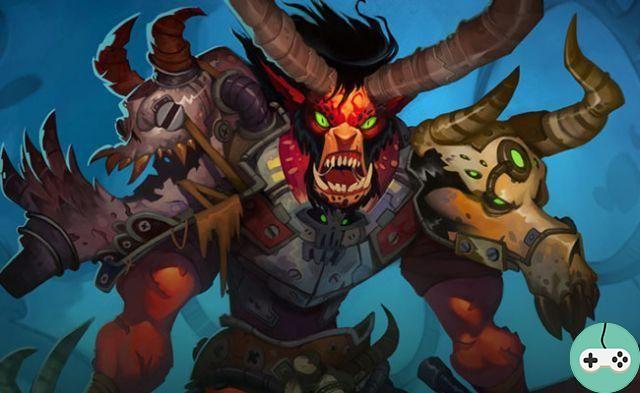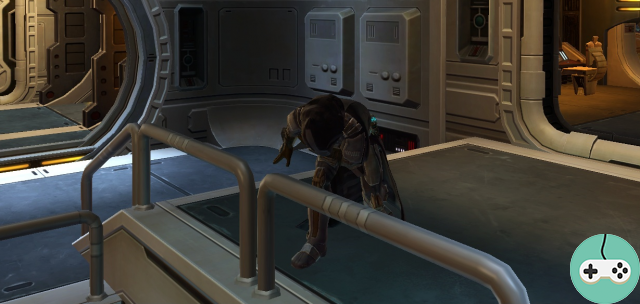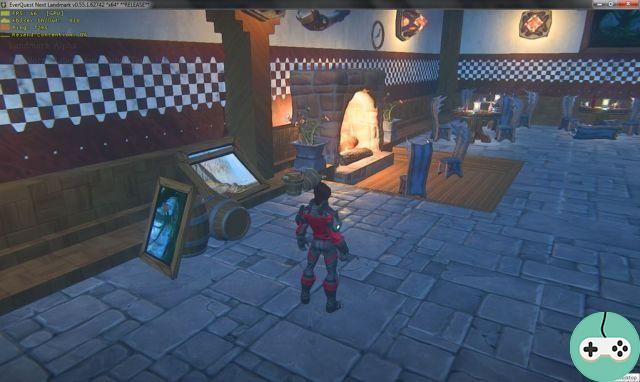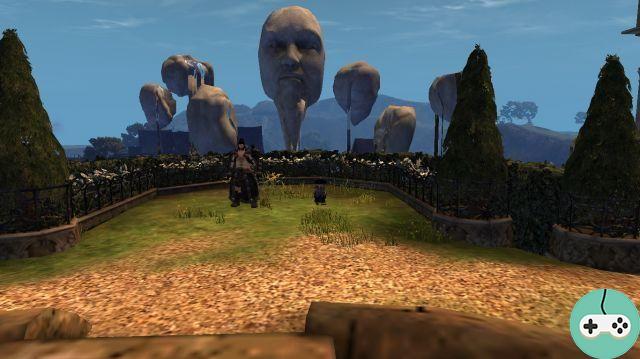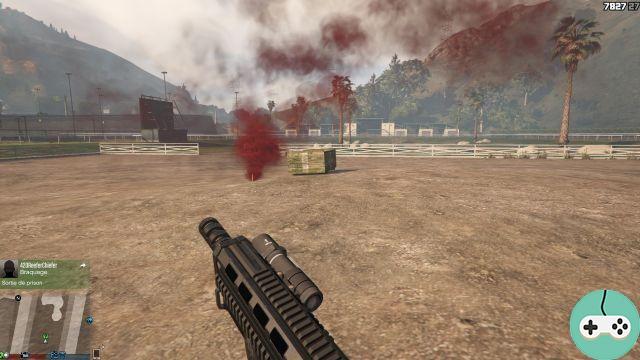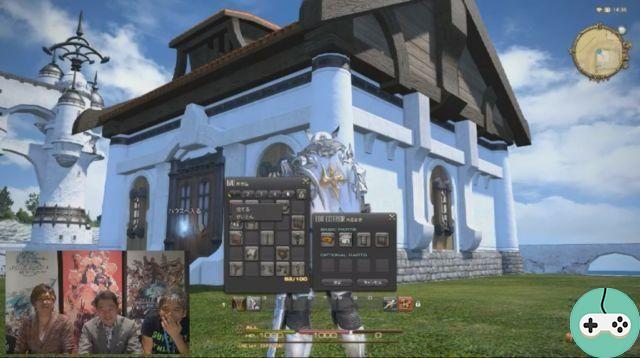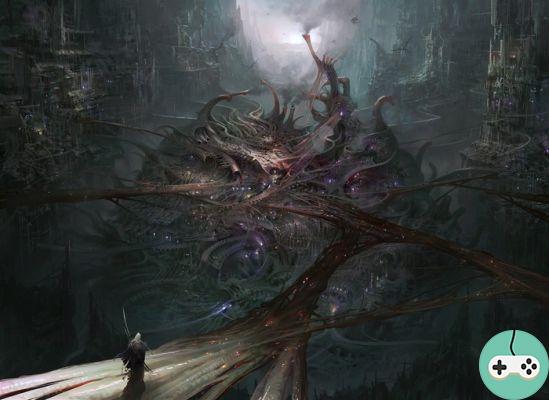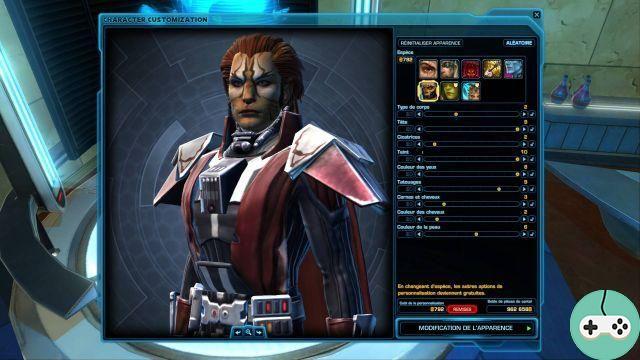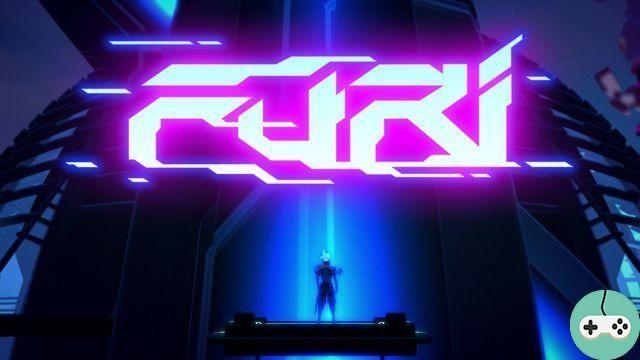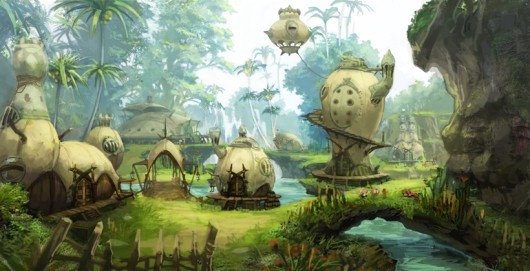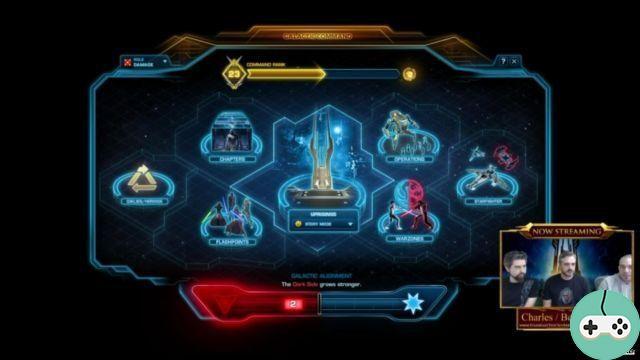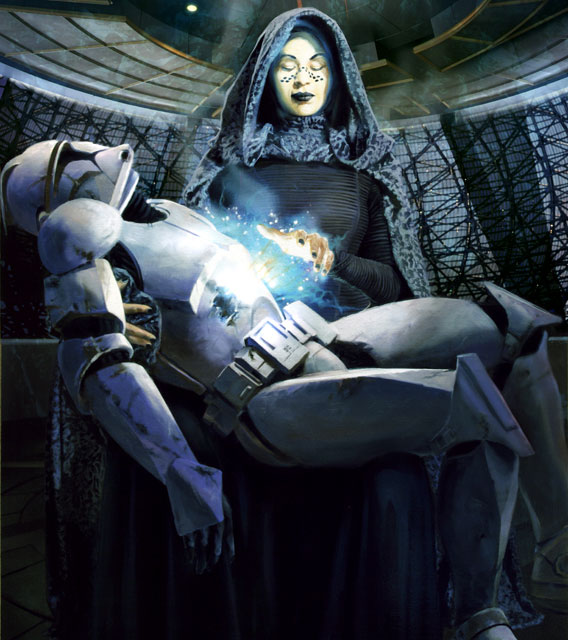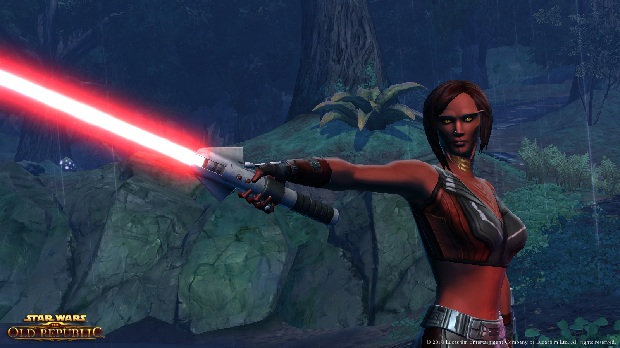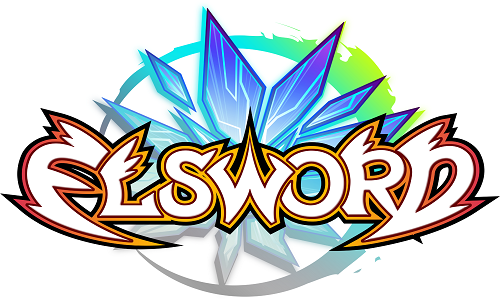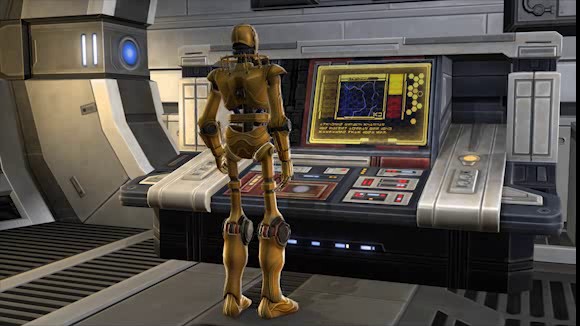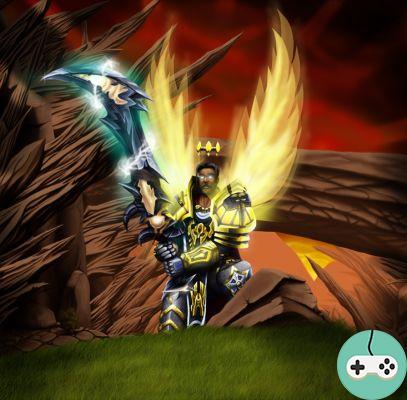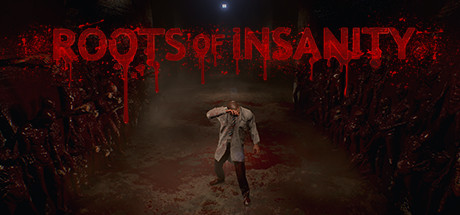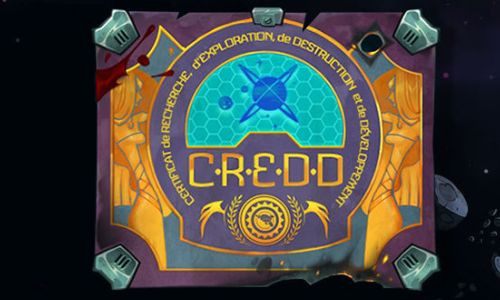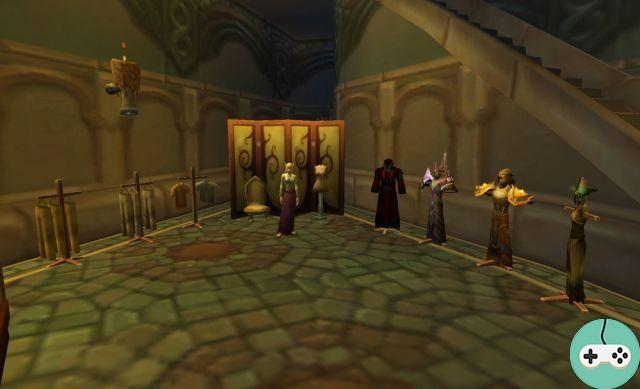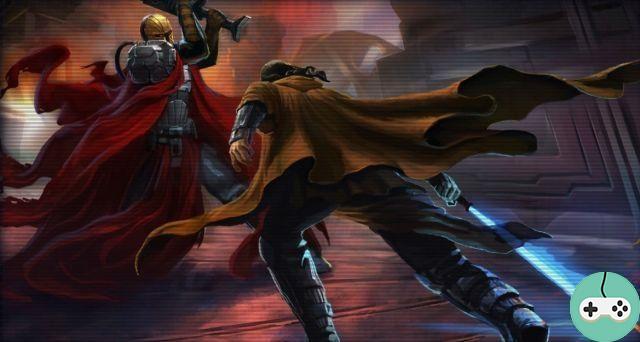
Located between the Great War of the Sith and the Civil War of the Jedi, which it links and allows to chain, the period of the Mandalorian Wars is a very important link in the conflicts between the Republic and the Sith. It is also the very first time that the Empire has attempted to influence the destiny of the great power of the Core. It was only supposed to be a reconnaissance of the defenses of the future enemy faction, but the lack of follow-through made this move useless and even slightly ridiculous. During this series of battles, the Mandalorian clans nearly destroyed the Republic, and only the intervention of a strategic Jedi genius could push them back. The plural in the name of the Mandalorian Wars is due to Republican historians who differentiate all battles before armored warriors attack territories under their jurisdiction. But on the other hand, these 16 years are one and the same campaign.

For many, this conflict has its source during the Great Sith War. The Mandalorian clans, which raged outside Republic territories, had ventured to the Core in search of an opponent to their measure. They had allied themselves with the young Brotherhood of the Sith, and their leader Mandalore the Indomitable had risen through the organization's military hierarchy to be named one of the greatest officers. But their side lost the war, and Mandalore the Indomitable died in the Battle of Onderon. The survivors, animated by a feeling of revenge, transmitted to their children the will to return to these territories. But not right now. For twenty years, they rebuilt themselves by fighting in their usual sectors. Until Mandalore the Ultimate, successor to the Indomitable, received a visit from a pure-blooded Sith who was looking for a grave on Rekkiad (in an area where Malachor and Natheema, home planet of the emperor). This emissary of the Chief of the Empire used the Force to manipulate the Chief Mando, and accelerate his plans vis-à-vis the Republic.

The warriors of Mandalore the Ultimate date the beginning of the conflict to -323 BC, at the Battle of Althir III. The Republic aligned itself with this date following information from Canderous Ordo, the future Mandalore the Savior, who was then serving as mando commander. The leaders of Coruscant did not react, this planet on the Outer Rim was not part of their jurisdiction and was therefore far from their eyes. This is how the politicians of the Galactic Senate justified their non-intervention for 12 years, allowing the enemy army to chain victories and strengthen their ranks. Mandalore the Ultimate relied in particular on Cassus Fett (no certified link with Jango and Boba), a human who was not born among the Mandalorians and who rose as the chief strategist of this army. The crusader clans (the nickname given to the commandos) were not able to absorb all the new recruits needed to face the Republic, he reorganized them into what were called the neo-crusaders. With a new all-military hierarchy that earned him the enmity of the old guard. But as his only rival in Mandalore's entourage was Antos Wyrick, a scientist nicknamed Demagol (the butcher) who worked on the Jedi to try to block and reproduce the Force's powers, and he was even less popular. , Cassus remained unavoidable to the end.

On the Republic side, the worlds of the region were worried about these turbulent neighbors. But they weighed very little in the decision-making centers of the Core. A few journalists were going to cover these border skirmishes, but their articles were relegated far from the headlines. We were moved by the loss of links with certain planets, but we did not always know what the Mandalorians would have done there. Could the Jedi Order consider an alternative? No more. Several Masters of the High Council had seen a vision that revealed to them the presence of a Dark force behind the movements of the Mandalorians. Today, we understand that it was an allegory of the Emperor and his agents who had precipitated the war. They decided not to intervene until they knew more. Their successors still praise their wisdom (like Master Gnost-Dural), but this decision was much criticized. On the outside, they gave the image of not caring about the victims of the war, or even the fate of the Republic when it ended up getting involved. And inside, as the vision was being kept a secret, a rift occurred with those who did not understand their choice. A young master gathered around him all those who opposed this policy of non-intervention. In front of his ardor, the media baptized him the Revanchist, nickname which became a few years later Revan.

-311 BC TC was a big turning point in this war. Planet Vanquo's mining outpost was insignificant, but it belonged to the Republic. For the first time, the army of the neo-crusaders had attacked one of their territories. A fleet gathers around Serroco for a punitive expedition. They were so sure of their strength that they did not even take some basic security measures. An enemy raid caught them by surprise and an orbital bombardment decimated most of their forces. The planet was not yet close to the front line. In twelve years, Coruscant and the Core worried for the first time. Especially since the fall of Taris opened the way for raids very close to the most influential worlds of the Republic. Cassus Fett deployed his forces along three axes: one towards Ord Mantell and Iridonia, one in the extension of Serroco towards Omonoth and Arkania, and the last by Onderon to Duro and Corellian space. The most active Republican service was that of propaganda, so as not to worry civilians. The capture of Demagol by the Revanchists pales in comparison, and his escape on the day of his trial has much to talk about. His death was confirmed for a few days later, but without any official body being involved. But at the same time, a group of Revanchists led by their young leader went to see why the planet Cathar was no longer responding. They discovered that ten years earlier, Cassus Fett had organized a genocide to unite his soldiers. Picking up the mask that made him famous, Revan vowed not to take it off again until the dead were avenged.

The rallying of the Revanchists to the Republican army against the advice of the Jedi Council created a schism within the Order. Those who fight are now considered renegades. But the High Command didn't care. Faced with the Mandalorian victories, they needed all the strength available. They didn't care about the internal conflicts of allied organizations. Especially since Revan revealed a strategic genius needed in this situation. In -309, its intervention in the battle of Duro made it possible to conserve the planet despite the destruction of the shipyards in orbit. Supreme Chancellor Tol Cressa appointed him Supreme Commander of the Armed Forces of the Republic. That didn't stop Mandalorian raids from continuing into the Core, and even across to Bespin. In his new post, Revan discovered that compromises were necessary to save the greater world. Especially against opponents who were fighting not to give up the slightest inch of ground. To the atrocities of these adversaries, he had to respond with other massacres to gain victories. In the Force, his troops became more and more gray.

The campaign of -308 brought the fighting back to the areas captured by the Mandalorians. The release of Taris made it possible to untie the knot that threatened the Core. Raids were even carried out in the systems from which the enemies originated. But Mandalore the Ultimate and his officers still didn't surrender. The conflict slipped over the neighboring worlds of the former Sith Empire. Including the Esstran sector (where Korriban and Ziost are located, as well as Dromund Kaas but its existence was unknown to the Republic at the time) where the battle of Jaga's Amas took place. Cassus Fett became the most wanted man in the galaxy there after boarding one of the commanding cruisers and killing his officer. But the course of the war has changed. It is now Revan's troops who seize Althir III, annihilating almost all enemy troops on the ground. Jedi General Meetra Surik, who commanded a second fleet, drove the last mandos from the Middle Rim at the Battle of Onderon and Dxun. Everything is ready to end in -307, at the battle of Malachor V.

It was necessary to corner the Mandalorian forces so that they agree to fight in this system which they consider cursed. Opposite, Revan gathered all his strength to make sure the war ended well like this. He even took with him a super-weapon designed by engineer Zabrak Bao-Dur, the Antigravity Mass Generator and entrusted to General Meetra Surik. He himself will be in the front line, seeking to face Mandalore the Ultimate from the start of the fighting. He will quickly manage to find and join him, but his personal victory is not enough to influence the course of the battle. The neo-crusaders remained far too tight-knit, and knew they could no longer run away. Their resistance was such that they almost managed to escape. Until Meetra Surik and Bao-Dur activate the Antigravity Mass Generator. The planet Malachor V was destroyed, transformed into a cluster of asteroids surrounded by debris from the ships of both camps destroyed at the time of activation. Those of the Republic had been more numerous to take shelter, they had won. The Mandalorians had reached their breaking point. The war was finally over.

Before dying, Mandalore the Ultimate had revealed to Revan the existence of the Sith Emperor's envoy. Worried about this new threat, he took his apprentice Malak to explore this trail. Evil took him because they were captured and returned. When they returned to Republic space, it was as servants on the Dark side. They returned the majority of the army to their command to start the Jedi Civil War. They had to assume the same role as the Mandalorians during this war, but once again it was without follow-up on the side of the Empire and therefore without any information gathered. As for the survivors of the clans, they saw all their possessions destroyed or confiscated. The last rebels who refused to surrender were to be hunted down by Meetra Surik, but traumatized by Malachor V, she did not last long before retreating from the galactic scene. Despite the efforts of Mandalore the Unknown and Mandalore the Savior, they never managed to reform properly. And it is only almost three centuries later that they will succeed in once again becoming an army capable of acting at the galactic level. And again, only thanks to the intervention of the Imperial Secret Services ...
References
In video games:
- Star Wars Knights of the Old Republic
- Star Wars Knights of the Old Republic II
(both games take place after the conflict, but several of the characters participated and can relate their memories)
Literature:
- Comic cycle "Knights of the Old Republic" volume 1 to 9
- bd Vector volume 1 (inserted between volumes 4 and 5 of the previous cycle)
- game master manual for the Star Wars KOTOR paper game (I don't have the exact name, sorry)
- novel "Revan" by Drew Karpyshyn (takes place between the two video games above)




